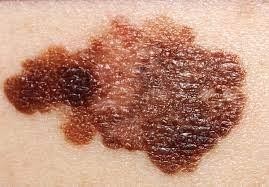A nurse is assessing a client who is 4 hr postoperative following a craniotomy for the treatment of a benign brain tumor. Which of the following findings should the nurse identify as the priority?
15 mL of drainage in Hemovac
Periorbital ecchymosis
Nonreactive pupils
Hgb 11 g/dL
The Correct Answer is C
Choice A rationale:
Drainage in the Hemovac is an expected finding postoperatively and is not as urgent as nonreactive pupils.
Choice B rationale:
Periorbital ecchymosis (bruising around the eyes) is not uncommon after a craniotomy and is not as urgent as nonreactive pupils.
Choice C rationale:
Nonreactive pupils can indicate a neurological emergency, such as increased intracranial pressure or potential damage to the cranial nerves. This finding requires immediate attention to prevent further complications.
Choice D rationale:
Hemoglobin level of 11 g/dL is within a normal range and is not a priority concern.
Nursing Test Bank
Naxlex Comprehensive Predictor Exams
Related Questions
Correct Answer is D
Explanation
Choice A rationale:
Rapid mood swings are not a defining characteristic of major depressive disorder.
Choice B rationale:
Hearing voices is a symptom more commonly associated with conditions like schizophrenia.
Choice C rationale:
Expressing mistrust of the nurse is not a specific symptom of major depressive disorder.
Choice D rationale:
A hallmark symptom of major depressive disorder is anhedonia, which is the diminished ability to experience pleasure or interest in previously enjoyed activities.
Correct Answer is D
Explanation
Choice A rationale:
Radiation therapy is not typically the primary method of treatment for melanoma. Surgical excision and other therapies are often utilized.
Choice B rationale:
Metastasis in melanoma generally occurs from the outer layers of the skin to deeper levels and eventually to other parts of the body.
Choice C rationale:
Specific genetic mutations, such as mutations in the BRAF gene, are associated with an increased risk of developing melanoma.
Choice D rationale: Melanoma is a highly metastatic form of skin cancer that can spread quickly to other parts of the body. Early diagnosis and treatment are crucial to improve outcomes.

Whether you are a student looking to ace your exams or a practicing nurse seeking to enhance your expertise , our nursing education contents will empower you with the confidence and competence to make a difference in the lives of patients and become a respected leader in the healthcare field.
Visit Naxlex, invest in your future and unlock endless possibilities with our unparalleled nursing education contents today
Report Wrong Answer on the Current Question
Do you disagree with the answer? If yes, what is your expected answer? Explain.
Kindly be descriptive with the issue you are facing.
